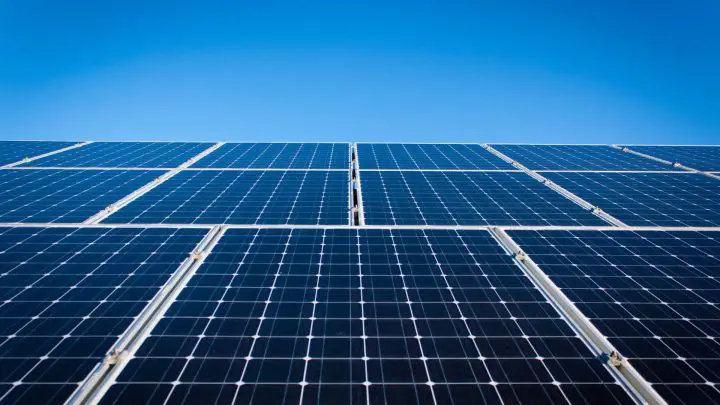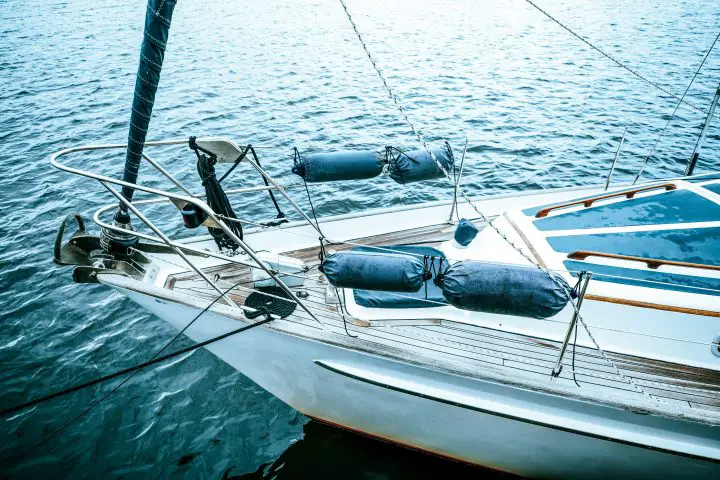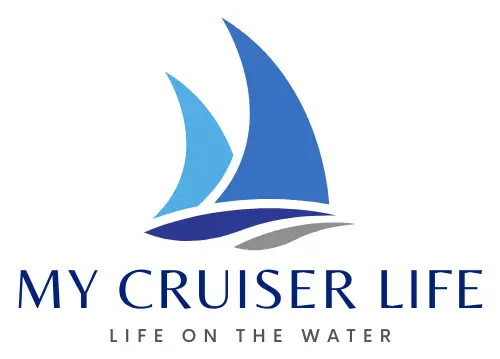You’re anchored in paradise, but your batteries are dying, and the nearest marina is miles away. Your fridge stops cooling, your anchor light goes dark, and you’re burning expensive fuel just to keep basic systems running.
Solar panels for boats aren’t just trendy green tech anymore – they’re essential gear for anyone serious about energy independence on the water. Whether you’re a weekend warrior or full-time cruiser, understanding how to harness the sun’s power transforms your boating experience from constantly worrying about battery levels to enjoying true freedom. Here’s everything you need to know about bringing reliable, silent power to your vessel.

Table of Contents
- How Solar Works on Boats
- Key Benefits of Solar on Boats
- Choosing the Right Solar Panels
- Planning Your System
- Mounting Considerations
- Charge Controller Conflict
- Your Solar Journey Starts Here
- FAQs
How Solar Works on Boats
Think of marine solar as your boat’s power station that never sleeps. Solar panels convert sunlight into electrical current and deliver it to your batteries via a charge controller, working exactly like your onboard house battery charging system but powered by the sun instead of shore power or a generator. It’s that straightforward – no magic, no mystery.
Here’s the key thing many folks miss: your panels charge batteries, not directly power devices. Picture it like filling a water tank rather than drinking straight from a garden hose. The solar panels pump energy into your battery bank throughout the day, and your devices draw from that stored power whenever they need it.
The charge controller acts as the traffic cop in this whole operation. It regulates the amount of current passing through to make sure batteries aren’t overcharged, and newer MPPT controllers will maximize energy harvesting while maintaining battery health. Without this crucial component, you’d be cooking your batteries faster than eggs on a hot summer deck. Battery storage isn’t optional – it’s the heart of your system.
Key Benefits of Solar on Boats
Whether at a slip, mooring, or on a trailer, boats can keep their batteries topped off without external power, and solar can supplement or even replace other onboard charging sources.
- Battery maintenance while docked, moored, or on trailer – Your bilge pump keeps working when you’re away from the boat for weeks. Your anchor light stays bright through the night. Your fridge keeps the drinks cold while you’re swimming. Solar panels keep batteries charged and vital systems running without shore power, making them beneficial for just about any boat.
- Reduces need to run engine/generator – The fuel savings alone can pay for your system over time. You can reduce or eliminate the need to run engines or generators to keep batteries topped off – a wasteful practice that burns fuel while wearing down the costliest pieces of equipment onboard. Less fuel consumption means less wear on your most expensive equipment.
- Silent, emission-free, minimal upkeep – There’s something magical about having power without noise, fumes, or vibration. Unlike generators that disturb the peace and require ongoing fuel purchases, solar panels operate silently and cleanly for years with minimal maintenance.
- Useful in emergencies – Emergencies become less stressful when you’ve got backup power. While underway, it’s a plus to be able to recharge a dead battery in an emergency – say, to operate a VHF radio or navigation gear. That peace of mind is worth its weight in gold.
- Modular scalability – The beauty of solar lies in its modular nature. Start with a single 100-watt panel to maintain your batteries, then add more panels as your power needs grow. It’s like building with Legos – you can always expand your system without starting over.
Related: How to Build a Houseboat: Time, Plans and Cost
Choosing the Right Solar Panels
Monocrystalline
Monocrystalline panels deliver the highest efficiency at around 17% and are the most durable option, though they’re also the most expensive. These are the overachievers of the solar world – they squeeze maximum power from minimal space, making them perfect when every square foot of your boat matters. They’re best for space-limited installs where you need serious performance from a compact footprint.
Polycrystalline
Polycrystalline panels offer slightly less efficiency at around 14% but provide good mid-range performance that’s cost-effective. Think of them as the reliable workhorses – they get the job done without breaking the bank. For many boaters, these hit the sweet spot between performance and price.
Amorphous (Thin-Film/Flexible)
Amorphous panels are the least efficient at around 8% but work better in shaded or low-light conditions, are lightweight, flexible, and walkable, making them inexpensive and versatile. Flexible solar panels have become increasingly popular with yacht owners due to their versatility and adaptability, being thin, light, bendable, and easy to install on almost any surface.
Here’s the critical detail everyone needs to know: shadow sensitivity is critical with crystalline panels. Even a small shadow from a stay or antenna can dramatically reduce output from the entire panel. It’s like having one weak link in a chain – the whole system suffers.

Planning Your System
Let’s walk through a real-world example that’ll make this crystal clear. Say you want to keep your bilge pump running reliably while you’re away from the boat for extended periods.
First, define your goal specifically. Maybe it’s maintaining your bilge pump, anchor light, and VHF radio on standby. Most appliances list their energy requirements on the packaging or plug, so the tricky part is figuring out how long each appliance will run.
Next, estimate your daily power consumption in amp-hours. Your bilge pump might draw 3 amps when running, but it only cycles for 10 minutes per day in normal conditions. Your anchor light draws 1 amp and runs for 10 hours nightly. Your VHF on standby pulls 0.1 amps continuously. Add it all up.
Calculate solar input needs based on sunlight hours, panel efficiency, and losses, then add a safety margin of around 25% extra capacity. This isn’t the place to cut corners – better to have too much capacity than find yourself with dead batteries when you need power most.
Remember that real-world conditions rarely match laboratory specifications. Clouds, boat movement, and less-than-perfect panel angles all reduce output. Plan accordingly.
Mounting Considerations
The eternal debate: fixed versus adjustable panels. Fixed panels mean less maintenance and lower output, while adjustable panels provide optimal angle and more work. Adjusting a 140-watt panel 3-4 times a day can achieve power generation of up to 65+ amp-hours on a clear day, approximately 30% more than a panel generates when mounted statically.
Location is everything. You can install solar panels in unique locations on your boat, but it’s important that they can track the sun’s movement throughout the day. Prioritize spots with maximum sunlight, minimal shading, and zero interference with boat operations.
Your mounting options include bimini tops, rail mounts, davits, and cabin tops. For bimini installations, you can use methods ranging from Velcro and snap fasteners to rare-earth magnets, though wind resistance becomes a concern. Rigid panel installations often use saddle-type posts and fork mounts that bolt through the canvas or create exterior rails that go up and over the top.
Think about accessibility too. You’ll need to clean these panels regularly, and sea spray doesn’t discriminate. Make sure you can reach them safely.
Related: Living On a Boat Full Time — What to Consider Before Living Aboard
Charge Controller Conflict
Here’s something that catches experienced boaters off guard: multiple charging systems can fight each other. When you have wind generators, alternators, and solar all trying to charge the same battery bank, conflicts between different setpoints can cause inefficiency.
Picture three people trying to fill the same bucket with different-sized hoses at different pressures – chaos ensues. Each charging source has its voltage preferences, and they can end up working against each other rather than together.
The solution involves staggered voltage settings or consulting the manufacturer’s guidance for multi-source charging systems. This real issue can reduce overall charging efficiency and shorten battery life, so factor coordination into your design from the beginning.
Your Solar Journey Starts Here
Solar gives you something amazing: real freedom on the water. No more worrying about dead batteries or burning fuel just to keep the lights on. You’ll save serious cash over time while enjoying that sweet silence of emission-free power.
Start simple with one panel and see how it performs. Monitor what happens over a season, then add more panels based on what you need, not just guesswork.
Remember that proper planning and marine-grade components are your best friends. Take time to size everything correctly from the start, and your solar system will reward you with years of reliable, quiet power generation wherever your adventures take you.
FAQs
How much solar do I need for a boat?
It depends on your power consumption and boat size. Start by calculating your daily amp-hour usage – add up all your devices like lights, fridge, and electronics. A typical 30-foot boat needs around 350 watts to maintain basic systems. For weekend trips, 100-200 watts works well. Full-time cruisers often need 400-800 watts or more.
What are the most efficient solar panels for boats?
Monocrystalline panels offer the highest efficiency at around 17%, making them ideal for space-limited boats. They’re more expensive but deliver maximum power per square foot. Polycrystalline panels provide good mid-range efficiency at 14% for budget-conscious boaters. Flexible panels are least efficient at 8% but work great for curved surfaces and walkable areas.
Can you put solar panels on a boat?
Absolutely! Solar panels are perfect for boats and can be mounted on biminis, cabin tops, rails, or davits. You can choose from rigid panels for maximum efficiency, flexible panels that bend with your boat’s curves, or walkable panels for high-traffic areas. Most installations are DIY-friendly with proper marine-grade components and weatherproof connections.
